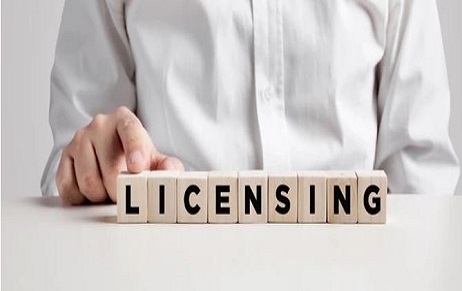Introduction A trademark helps a consumer obtain goods and services of a certain quality and reduces…
Trademark Licensing in India
Trademark licensing is the process wherein a registered proprietor of a trademark authorizes a third party to use the mark in the course of trade without transferring the ownership of the mark. The licensing of the trademark allows the registered proprietor to let others use the mark without assigning the ownership of the mark. The proprietor can also put other limitations on the use of the mark through the terms that he puts into the licensing agreement. For example, the proprietor may license a trademark to be used for only particular goods and services.
The term “license” or “licensing” is nowhere to be found in the Trade Marks Act, 1999. The concept and the laws governing licensing of trademarks are found in Sections 48-55 of the Act. It can be said that the term “registered user” in the Act is synonymous with the term “licensee”. Under the 1999 Act, “permitted use” as defined in Section 2(1)(r) means the use of a registered trademark by a third person as a registered user; as well as, used by a third person by the mere consent of the registered proprietor. The use of the word “may” in Section 48(1) of the Act makes it apparent that registration of a licensing agreement is not mandatory for it to be licensed. The agreement, however, must be in writing as oral licensing is no licensing. Though the Act is silent on the issue of licensing of an unregistered trademark, such licensing is deemed lawful under common law and is commonly referred to as common law licensing. Nothing in the Act suggests that the rights of a licensee in the case of an unregistered trademark are different from that in the case of a registered trademark.
Trademark licensing has become a common practice as it benefits both the licensor and the licensee. The licensor earns money by way of royalty, while the licensee gets to commercially exploit the mark. In addition to monetary benefits, the licensor also benefits due to the expanding reach and popularity of the mark. But, if left unchecked, licensing could also harm the repute of the mark. Hence, it is of utmost importance to incorporate clauses with respect to quality checks of goods or services in the license agreement. Section 49 of the Act mandates that licensing agreements shall state the degree of quality control. The object behind this provision is that a connection in the course of trade between the proprietor and the registered user should reflect in the licensed use of the mark. The Bombay High Court in UTO Nederland BV v. Tilaknagar Industries Ltd[1] held that the license could have been rendered invalid, had the performance and terms of the agreement suggested the existence of facts that implied no quality control. It was held in Bowden Wire v. Bowden Brake[2] that a trademark license ceases to be valid if there is no connection in the course of trade with the registered proprietor. In the famous Barcamerica case[3], the Court held that “naked and uncontrolled licensing” results in the trademark ceasing to function as a symbol of quality wherein it appears that the registered proprietor has abandoned the trademark and in such a scenario he may be stopped from asserting his rights over that mark.
As discussed above, the registration of the license agreement is not mandatory; however, it is advisable to do so since it creates a record that becomes useful in the case of any dispute in the future. By way of registration of the license agreement, a licensee becomes a “registered user” in lieu of Section 49. For the registration of a registered user, a joint application is to be filled to the Registrar through the TM-28 Form within six months from the date of the agreement. The registration process is hereby summarised in a few steps:
1. Filling of TM-28
The form TM-28 is to be filled in triplicate along with the following documents:
- The license agreement or a duly authenticated copy thereof.
- Document and correspondence, if any, or a copy thereof.
- Supporting affidavit.
- Such other documents and evidence/information as the Registrar may call upon.
2. Drafting Supporting Affidavit
The supporting affidavit should contain the following:
- The precise relationship between the registered proprietor and the proposed registered user.
- Particulars showing the degree of control by the registered proprietor.
- Goods & services in respect of which registration is proposed.
- Conditions or restrictions imposed by the license.
- Period of permitted use of the mark.
3. Ensure that the License Agreement includes the following:
- All particulars mentioned in the supporting affidavit.
- The terms with respect to royalty and other remuneration.
- The means for bringing the permitted use to an end.
4. Filling of the Application
The filing of applications through Form TM-28 can be done either online or offline to the Registrar.
5. Acceptance by the Registrar
The Registrar may accept the application either completely or conditionally. A conditional acceptance takes place when conditions/restrictions/limitations are put on the permitted use provided in the license. In the case of conditional acceptance, the registrar will issue a notice to the applicant.
6. Hearing in the case of Conditional Acceptance
On the issue of notice of conditional acceptance by the Registrar, the parties may apply for a hearing. On the application of hearing, the Registrar may appoint time within two months. After the hearing, the Registrar may accept completely or conditionally, or reject the application altogether. The order of the Registrar is to be communicated in writing. It is to be noted that if the party fails to apply for hearing within one month of the issue of notice, the registrar may accept the agreement with the conditions and limitations he imposed.
7. Entry in Registrar
When accepted, the Registrar records the proposed registered user as a registered user in the register.
8. Notification to other registered users, if any
After the recording takes place in the register, the Registrar needs to ensure that notice to every other registered user of the trademark (if any) is issued. The Registrar also needs to ensure that this fact is inserted in the Trade Mark Journal.
The Trade Mark Act, 1999 talks about “assignment” and “transmission” of trademarks and does not explicitly mention anything about “license”. Therefore, it is pertinent to understand that there are some basic differences between assignment and licensing of trademarks. An assignment is a permanent transfer of ownership of a trademark, whereas, licensing is a temporary transfer with respect to certain rights for using a trademark. Furthermore, a license can be revoked unlike in the case of assignments. Therefore, assignments result in a change of ownership wherein the assignee becomes the owner of the trademark, unlike licenses where only limited rights are transferred to the licensee for a particular time period.
The licensing of trademarks is an effective practice for the regulated exploitation of the mark. It helps both the licensor and the licensee in the growth of their respective businesses. Additionally, it results in the development of the brand image as the licensee is required to maintain a certain degree of control over the standard and the quality of the goods and services that he sells or provides under the mark.
Author: Aparthiba Debray – 4th Year- B.A. LL.B. (Hons.), student of Institute of Law (Nirma University), intern at Khurana & Khurana, Advocates and IP Attorneys. In case of any queries please contact/write back to us at [email protected].
References:
[1] MANU/MH/1827/2011
[2] RPC 45 at 580
[3] Barcamerica International USA Trust v. Tyfield Importers Inc, 289 F.3d 589 (9th Cir. 2002)



